|
P13/14/17 |
The story behind the Patterns 13, 14 and 17 begins after the second Boer War 1899-1902. The Boers and the British Army were armed with a mixture of rifles, the Boers mainly with 7mm Mauser 1895/6/7 rifles and carbines and the British infantry with originally .303 Lee-Metfords which were then replaced during the war with the .303 Lee–Enfield. This was due to the cordite used in the .303 ammunition being highly corrosive to the Metford form of rifling.
After the war it was felt by the British War Office that the 7mm Mauser was a far superior rifle for the needs of the British Army than the .303 Lee-Enfield currently in use, and so trials were begun in 1909 to develop a new state-of-the-art rifle and cartridge of approximately 7mm in calibre. Six different cartridges were evaluated and the .276 Enfield was chosen. This was a very advanced, high velocity, rimless round firing a 165 grain bullet at 2800 feet per second giving approximately 2880 foot pounds of energy, which by comparison the current NATO 7.62x51 round with 165 grain bullet travelling at 2600 feet per second gives only 2477 foot pounds of energy.
The new rifle chambered for the .276 cartridge was submitted on the 3rd of April 1911 to the Small Arms Committee by Assistant Superintendent Carnegie and Chief Designer Reavill, who were employees at the Royal Small Arms Factory Enfield (RSAF). In 1912, after a few modifications, 1000 rifles were initially ordered and then a further order for another 251 was placed making 1251 in total. These were to be made at the RSAF and were delivered in January 1913 for troop trials. The new rifle was called the ‘Pattern 13’ or P13.
|
 |
The P13 was designed with the emphasis on the ability for rapid accurate, fire as this was a priority for the British Army during this period under the new guidelines set out in 1906 from the then Secretary of State for War, Richard Haldane. This doctrine was to serve the British Army well at the battle of Mons in 1914. The action was built on the Mauser design with a long claw extractor and was cock-on-closing; it had a five shot magazine that could be loaded with a stripper clip. The rearsight was mounted on a bridge between two protective wings above the rear of the bolt giving a much better sight radius. The sight itself was very advanced having an adjustable flip-up rearsight, with a battle sight when folded down; as later used on Lee-Enfield number 4’s and 5’s this allowed rapid and accurate sight acquisition (see photo). The Mauser-type bolt had a low profile handle that was swept back to bring it close to the user's hand, hence its distinctive 'dog-leg' shape. The action was strong and the barrel was given a heavy profile. The stock was of one piece the same as the Mauser stock with four diagonal grooves on either side, the stock was also easier to produce than the two-piece Lee-Enfield.
|
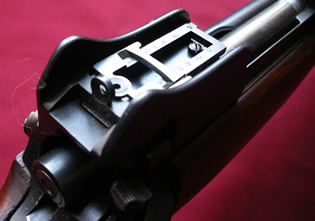 |
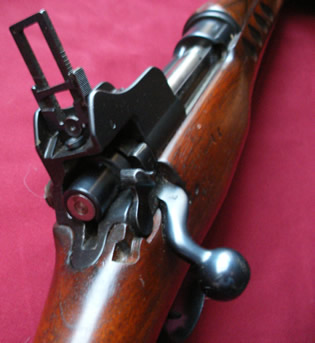 |
The trials didn’t go so well, there were complaints of heavy recoil and muzzle flash; it was also found that the new high velocity .276 cartridge caused a lot of metal-fouling and corrosion due to the heat of the propellant and the high velocity of the bullet. The trials were stopped after a rifle burst until further development could be made with the ammunition.
See photos - top .303 Mk VII, bottom .276 Enfield |
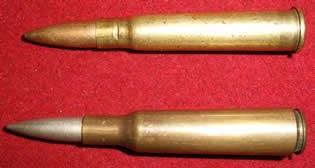 |
Then came 1914 and the First World War. The start of a major conflict is not a good time to change a service cartridge, the rifle itself was good, all that was needed was to change the calibre to the then current .303 MKVII service round. Modifications were made to the bolt and sights to accept the .303 rimmed cartridge.
The rifle in this new configuration was the ‘Pattern 1914 Rifle’ or P14. A contract was given to Vickers for 100,000 rifles and bayonets on the 3rd June 1915 at a cost of £5/4 shillings (€6.25) for the rifle and 13/8d (€0.82) for the bayonet.
Vickers at the time was heavily committed to machine gun production and as the war continued demand for them became ever greater. It was decided to give the contract to three American producers first to Remington Arms Company then to both Winchester and Eddystone.
TO BE CONTINUED WITH MORE TEXT AND PHOTOS….
|
| |


| Ref 830 |
.303 P14
Manufactured by Eddystone
All original matching numbers throughout although the barrel and stock have been given a second number as well as a Union of South Africa ownership mark.
The stock is the correct 2nd pattern, wider at the fore-end fatso type manufactured by Eddystone. The bore is good. It has undergone the W.R.S. ie volley sights removed. It has all the correct Military stamps.
|
€575 |
|


| Ref 818 |
.303 P14
Manufactured by Winchester
All original matching numbers. The bore is sharp like new. It has all the usual military stamps with very nice wood. It has undergone the W.R.S. ie volley sights removed.
|
€675 |
|


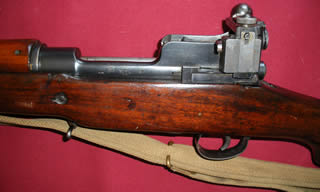 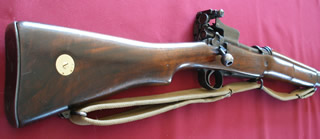
| Ref 825 |
.303 P14
Manufactured by Winchester
|
€ |
|
| Ref |
.30-06 P17
Awaiting information
|
€ |
|


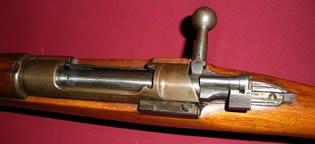
| Ref 815 |
7mm Mauser 1895/6/7 also known as the Boer Mauser.
One of 20,000 Mausers Rifles made by Ludwig Loewe and delivered to the Z.A.R (Zuid-Afrikaansche Republiek) in 1896. The rifle is in the first batch A1 - A10000 serial number range. The rifle is in excellent condition and the bore is mint. All matching including the stock |
€825 |
|




| Ref 835 |
7.92mm Yugoslavian Model 98
|
€275 |
|


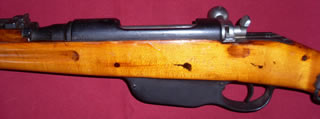
| Ref 839 |
8x60
M95 Straight Pull Service Rifle |
€ |
|


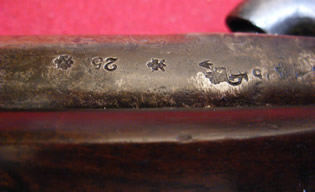 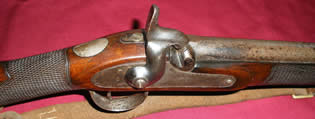
| Ref 813 |
.577
Commercial P53. The barrel is marked
H. Holland 98 New Bond Street London and has a broad arrow stamp. It is believed that this was part of a contract purchased to arm the Guards of the London docks. Harris Holland was the founder of the gunmaker Holland & Holland.
The trigger guard is silver plated and the gun is in good condition overall although the bore is pitted. The action is good, and the wood to metal fit of a gun of this quality is excellent. The wood is in excellent condition with nice crisp chequering.
|
€1750 |
|



| Ref 836 |
.577/.450 Mark IV Martini Henry. |
€ |
|


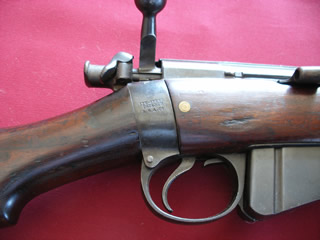
| Ref 820 |
.303 Enfield 1902
AJP Barrel. Brass presentation plaque to stock. |
€1350 |
|



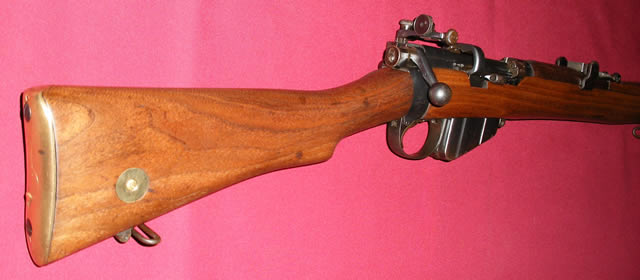


| Ref 832 |
.303 SMLE
Dated 1916. This was probably made late 1915 as a Mark III rifle built by N.R.F. (National Rifle Factory) and assembled at Enfield during the 1916 change over to Mark III*. It has been fitted with the mag cut-off and the stock has a brass marker disk, it has been cut for the volley sight which has not been fitted.
It has been turned into a target rifle by A.G.Parker of Birmingham between 1925 and 1930. The barrel and action marked A.G.P. and ball burnished. The sight is a Parker- Hale 5 A. which has some pitting to the elevation scale. The bore is perfect and the wood is also in exellent condition. All matching except for the nose cap and rearsight which has been changed to the early type with windage adjustment.
Overall a very nice rifle. |
€850 |
|


| Ref 831 |
.303 SMLE
Manufactured by Ishapore in 1942. All matching. |
€ |
|


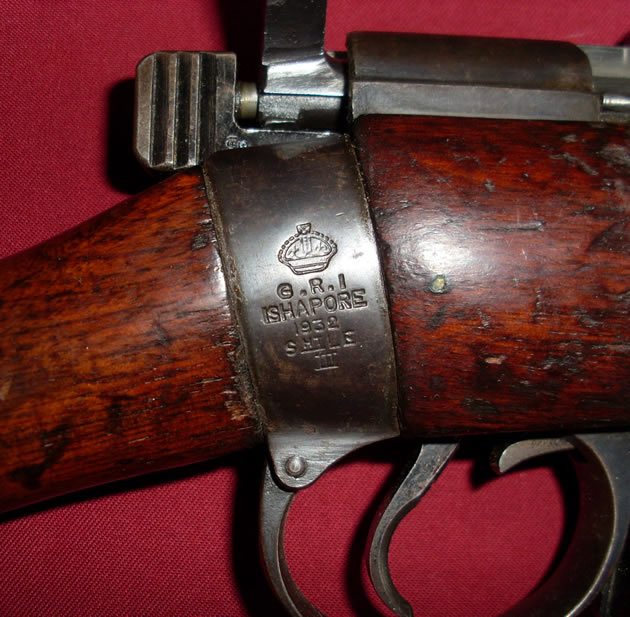
| Ref 838 |
.303 SMLE III Manufactured by Ishapore in 1932.
|
€ |
|


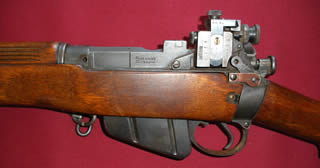
| Ref 823 |
.303 Lee-Enfield No4 Mark I
1942 Made by Savage. Parker Hale PH5C Target sights. South African marks, bore as new. Marked 'US Property' |
€675 |
|


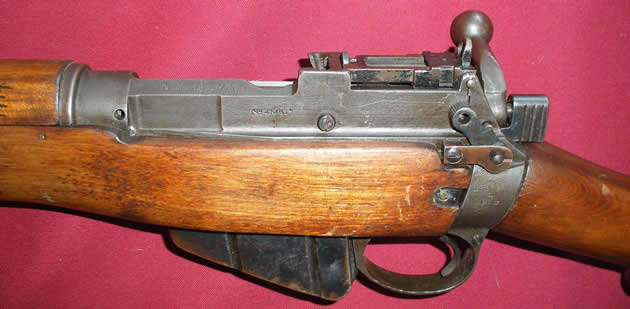
| Ref 826 |
.303 Lee-Enfield No4 Mark 1* Marked US Property
|
€ |
|


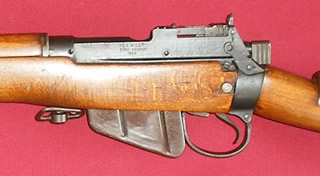
| Ref 827 |
.303 Lee-Enfield No4 Mark 1*
|
€525 |
|


| Ref 829 |
.303 Lee-Enfield No4 Mark II
|
€525 |
|


| Ref 834 |
Remington Rolling Block rifled carbine made under contract by EM & L Nagant, Liège circa 1871
|
€ |
|
|
|

